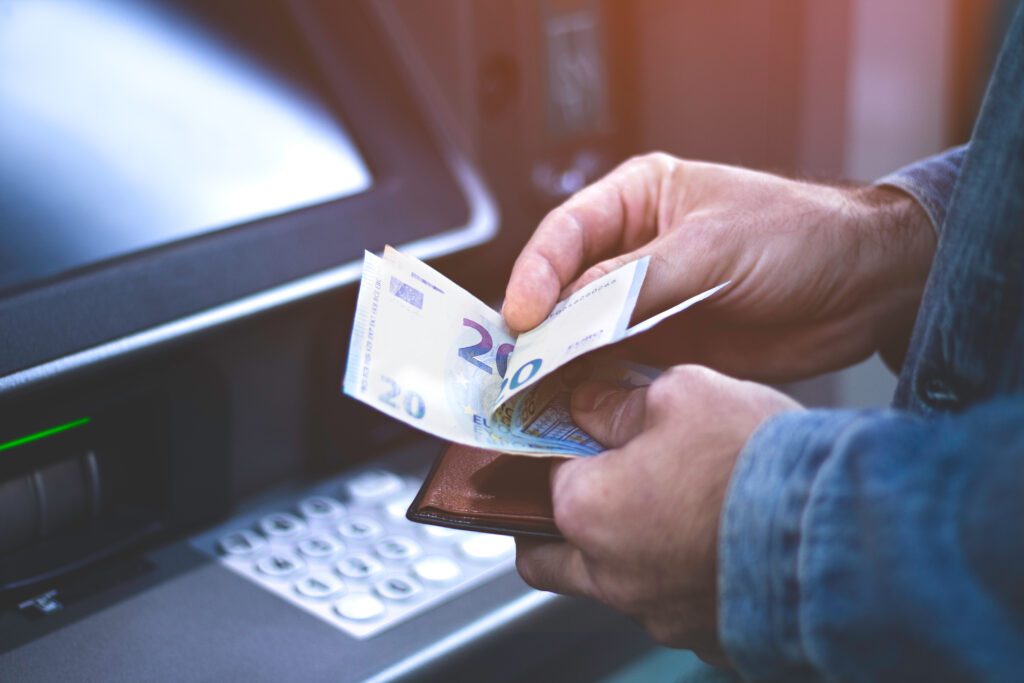
Guy W. Lecky-Thompson, head of products & processing services at Trionis explains why ATMs still have a prominent role in the future of the payments industry.
Operating ATMs is an expensive business. The high cost is a factor driving banks to abandon locations and pool their resources through deployers such as Geldmaat in the Netherlands and Batopin in Belgium.
Research shows that high costs are linked to cash management – putting cash into the ATM so account holders can withdraw it – as well as updating the operating system and staying ahead of both fraudsters and criminal attacks on the hardware.
For their trouble, ATM operators receive something called an interchange fee. Typically, this is a very modest amount that struggles to compensate the operator for the costs incurred and is closely monitored by the European regulators, which may affect the stability of the revenue model.
The market has found two natural reactions to this, both of which penalise the account holder.
Firstly, there is the access fee, or surcharge. This is an attempt to cover the cost and make a modest profit by charging account holders to withdraw their own money. In some markets, notably Germany, this is standard practice. In others, such as the UK, it has become something of an anathema.
Secondly, dynamic currency conversion, or DCC, attempts to generate some additional revenue based on inter-currency transactions. A UK visitor to the EU, for example, can choose to be billed in their own currency for a Euro transaction (and vice versa), with the rate and mark-up prominently displayed to the account holder, and usually a few points above the interbank rate for the day.
Both surcharge and DCC generate ATM operator revenue, and both do so at the expense of the person they are supposed to serve: the account holder.
Somehow, that doesn’t seem very equitable.
Capabilities beyond cash
Douglas Adams once wrote that “A computer terminal is not some clunky old television with a typewriter in front of it. It is an interface where the mind and body can connect with the universe and move bits of it about.”
That is how I like to see ATMs – a trusted physical touchpoint between the account holder and their various accounts that they can use to move bits of their wealth universe around; not just a hole in the wall.
One might argue that ATMs are a security risk rather than a trusted touchpoint. ATMs can be hacked, but it is hard work compared to sending a virus out onto your laptop or smartphone.
Physical ATM hacks are usually aimed at direct access to cash, not accounts. Moving beyond ‘the hole in the wall’, which involves two-factor authentication using SCA, ATMs could become invaluable actors in the banking landscape, building on accepted security models, and strengthening them.
However, humble ATMs need to become more versatile. In doing so, they can also open up new revenue opportunities for ATM operators to defray the cost of providing access to cash and also to generate genuine profit.
New ATMs, new revenue models
An ATM has everything it needs to provide basic vending: for example, mobile phone pay-as-you-go top-up vouchers, or cryptocurrency wallet loads. Modern ATMs also have a connection to issuing banks, third-party networks, and, crucially, a way to access other specialist APIs.
ATMs connecting to DCC providers’ APIs perform a forex operation. They ought to be able to connect to the API of an airtime voucher provider, and vend a code that allows the account holder to add airtime to their mobile phone account; or, vend a parking ticket or recharge a public transport smartcard.
QR codes allow even line-printer-equipped ATMs to generate receipts with a QR parking voucher. They can consist of ASCII characters (such as asterisks or hashtags) and be readable by parking attendants’ mobile phones and checked against a central database.
The APIs used to purchase airtime, or request DCC rates, could be used to buy parking tickets, event entries, or transportation tickets. They can all be represented by QR codes which are easily read, checked, and hard to fake.
A printed QR code doesn’t require a mobile phone app to be installed.
Where next for the humble ATM?
As recently evidenced in The Payment Association’s ‘Insights Podcast’ in the episode ‘Payments convergence: Navigating the transition away from traditional cards’, and the work of ATMIA’s ‘Consortium for Next Gen ATMs,’ there are moves to ditch plastic cards and swap them for mobile devices and cash against account-to-account payments.
While we’re not there yet, it may be the low-hanging fruit; a stepping stone technology to conducting more complex transactions on the lowly ATM. Alternative ways to interact with your bank – via an app, for example – and tying that into physical devices such as ATMs could use the same technological leverage as moving money or making purchases.
Convergence is a big word, and the industry, typically split into cash and card, may find that the two sides are forced together under its umbrella. After all, an ATM is simply a point of service device with added-on cash withdrawal and account management.
Open banking and PSD3 may eventually remove cards, and even cash, from the payments landscape. ATMs could become kiosk-based POS devices, offering account-to-account services through what has traditionally been the account holder’s one trusted touchpoint with their bank.
In many markets, ATMs are a habit that will prove exceptionally hard to break; and embracing them as all-purpose secure and trusted account-access interfaces, rather than just a hole in the wall, will help shape the payments landscape and deliver value to account holders.
Guy W. Lecky-Thompson is head of products & processing services at Trionis.







Log in to access complimentary passes or discounts and access exclusive content as part of your membership. An auto-login link will be sent directly to your email.
We use an auto-login link to ensure optimum security for your members hub. Simply enter your professional work e-mail address into the input area and you’ll receive a link to directly access your account.
Instead of using passwords, we e-mail you a link to log in to the site. This allows us to automatically verify you and apply member benefits based on your e-mail domain name.
Please click the button below which relates to the issue you’re having.
Sometimes our e-mails end up in spam. Make sure to check your spam folder for e-mails from The Payments Association
Most modern e-mail clients now separate e-mails into different tabs. For example, Outlook has an “Other” tab, and Gmail has tabs for different types of e-mails, such as promotional.
For security reasons the link will expire after 60 minutes. Try submitting the login form again and wait a few seconds for the e-mail to arrive.
The link will only work one time – once it’s been clicked, the link won’t log you in again. Instead, you’ll need to go back to the login screen and generate a new link.
Make sure you’re clicking the link on the most recent e-mail that’s been sent to you. We recommend deleting the e-mail once you’ve clicked the link.
Some security systems will automatically click on links in e-mails to check for phishing, malware, viruses and other malicious threats. If these have been clicked, it won’t work when you try to click on the link.
For security reasons, e-mail address changes can only be complete by your Member Engagement Manager. Please contact the team directly for further help.